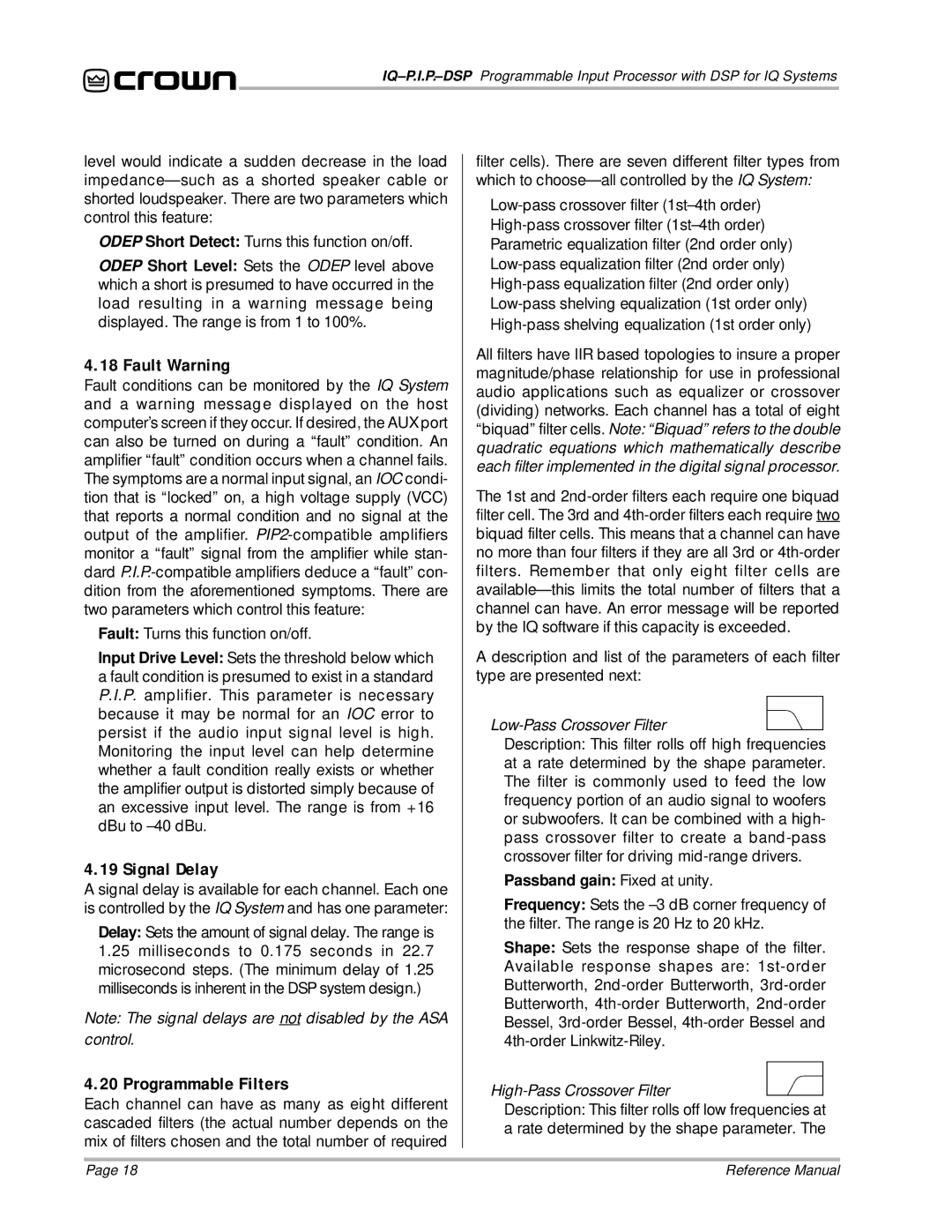
level would indicate a sudden decrease in the load
ODEP Short Detect: Turns this function on/off.
ODEP Short Level: Sets the ODEP level above which a short is presumed to have occurred in the load resulting in a warning message being displayed. The range is from 1 to 100%.
4.18 Fault Warning
Fault conditions can be monitored by the IQ System and a warning message displayed on the host computer’s screen if they occur. If desired, the AUX port can also be turned on during a “fault” condition. An amplifier “fault” condition occurs when a channel fails. The symptoms are a normal input signal, an IOC condi- tion that is “locked” on, a high voltage supply (VCC) that reports a normal condition and no signal at the output of the amplifier.
Fault: Turns this function on/off.
Input Drive Level: Sets the threshold below which a fault condition is presumed to exist in a standard P.I.P. amplifier. This parameter is necessary because it may be normal for an IOC error to persist if the audio input signal level is high. Monitoring the input level can help determine whether a fault condition really exists or whether the amplifier output is distorted simply because of an excessive input level. The range is from +16 dBu to
4.19 Signal Delay
A signal delay is available for each channel. Each one is controlled by the IQ System and has one parameter:
Delay: Sets the amount of signal delay. The range is
1.25milliseconds to 0.175 seconds in 22.7 microsecond steps. (The minimum delay of 1.25 milliseconds is inherent in the DSP system design.)
Note: The signal delays are not disabled by the ASA control.
4.20 Programmable Filters
Each channel can have as many as eight different cascaded filters (the actual number depends on the mix of filters chosen and the total number of required
filter cells). There are seven different filter types from which to
All filters have IIR based topologies to insure a proper magnitude/phase relationship for use in professional audio applications such as equalizer or crossover (dividing) networks. Each channel has a total of eight “biquad” filter cells. Note: “Biquad” refers to the double quadratic equations which mathematically describe each filter implemented in the digital signal processor.
The 1st and
A description and list of the parameters of each filter type are presented next:
![]()
![]() Description: This filter rolls off high frequencies at a rate determined by the shape parameter. The filter is commonly used to feed the low frequency portion of an audio signal to woofers or subwoofers. It can be combined with a high- pass crossover filter to create a
Description: This filter rolls off high frequencies at a rate determined by the shape parameter. The filter is commonly used to feed the low frequency portion of an audio signal to woofers or subwoofers. It can be combined with a high- pass crossover filter to create a
Passband gain: Fixed at unity.
Frequency: Sets the
Shape: Sets the response shape of the filter.
Available response shapes are:
![]()
![]() Description: This filter rolls off low frequencies at a rate determined by the shape parameter. The
Description: This filter rolls off low frequencies at a rate determined by the shape parameter. The
Page 18 | Reference Manual |
